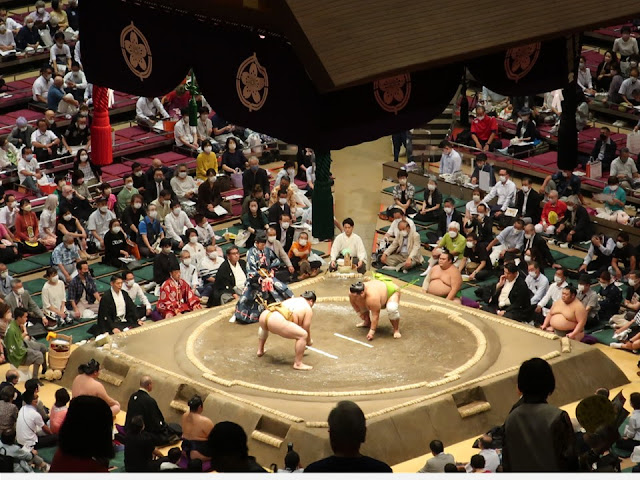Acupuncture, moxibustion and massage museum、鍼灸あん摩博物館
The small museum is in Sugiyama treatment
center, which is related to Sugiyama Waichi
(1610-1694). He went blind when he was a child. He acquired the acupuncture and
moxibustion technique at Enoshima Island in Kanagawa prefecture and became a
renowned therapist; even the shogun (ruler)
relied on him.
Western medicine didn’t spread back then,
and an oriental medicine such as an acupuncture was popular. Even in the area
where I live, people invited a therapist from Tokyo and got treatment back then
(reference: :Yoshino’sdaily life 33 (Jan. to Feb. in 1855)). There is Ejima-Sugiyama Shrine
beside the treatment center, in which Sugiyama is enshrined.
徳川綱吉の信頼を受けた杉山和一総検校(1610-1694)ゆかりの杉山鍼按治療所にある小さな博物館です。杉山和一は幼い頃に失明しましたが、江ノ島弁天で鍼術を授かり、名人として活躍しました。
科学的な西洋医学が普及していない時代、人びとは経験的な鍼灸治療に頼りました。私が読み続けている千葉県流山市の名主の日記にも、江戸から灸治の先生を招いて、近隣の人々ともに治療を受けたという話が出てきます(参考:Yoshino’s daily life 33 (Jan. to Feb. in 1855、安政2年1~2月))。博物館の隣には、杉山和一も祀られた江島杉山神社があります。
There is a cave at the end of the right path in the shrine, which is imitated the one in Enoshima. It was built in 1793 and has a distinctive atmosphere.
神社には、江ノ島の洞窟を模して寛政5(1793)年に造られた岩屋があります。右側の通路の先です。独特の空気で、行ってみる価値ありです。
Transition of acupuncture tools is introduced on the left side of the entrance.
入って左側には、鍼灸治療道具の変遷が紹介されています。
Those are explained in English in details, too.
英語でも丁寧に説明されています。
The technique book (1838) of the Sugiyama school is the origin of Japanese massage “Anma”.
杉山流按摩術の唯一の写本「杉山真伝按摩舞手」(1838)は、按摩手技のルーツだそうです。
His two major achievements are introduced behind his small statue. The first one was that he developed an acupuncture using a tube for an easier operation. Another was that he provided a job to a blind person as an acupuncturist and so on. That’s great.
和一の彫像とともに彼の二大功績が紹介されています。一つは、鍼の操作が容易な「管鍼術」を始めたこと、二つ目は、視覚障害者に鍼灸・按摩の生業の道を開いたこと。素晴らしいことです。
Exhibits above are related to the shogun (Tokugawa Tsunayoshi) who was treated by Sugiyama.
杉山和一の治療を受けた徳川綱吉ゆかりの品です。「大弁財天」の掛け軸は直筆です。
It is the sign board of Sugiyama treatment center. I think an oriental medicine is effective.
杉山鍼按治療所の看板。東洋医学は、良いと思います。
Ryogoku Kokugikan (sumo wrestling arena) 、両国国技館
The sumo arena is near the museum.
近くの国技館へ行きました。
I reserved the cheapest sheets. It’s far from the dohyo (sumo ring).
一番の安い席だけに土俵は遠かった(十両の取り組み)。
They sweep the dohyo in between matches. Sumo originated as a performance to offer to a deity.
取り組みの合間に、土俵を掃き清める姿。相撲は神事ですねえ。清々しい。
Reference: Ryogoku and Sumo Museum 両国と相撲博物館
The gyouji (referee) buries offerings in the dohyo prior to a tournament.
場所前の土俵祭では、米などを土俵に鎮めます。
Foods such as rice and seaweeds are in the offering package (lower left).
鎮め物(左下、復元品)とその中身が国技館の中にある相撲博物館に展示されていました。
Visited
in September, 2022
Official
website: https://sugiyamawaichi-kengyou.com/about/shinkyu-anma/ (in Japanese), accessed in
February, 2023
Previous post (manga museum in Tokyo): Tokiwaso
Manga Museum、トキワ荘マンガミュージアム
Next post (museum in Tokyo): Ota City Folk Museum、大田区立郷土博物館















Comments
Post a Comment